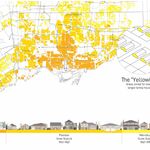steveintoronto
Superstar
It's a damn good question, and any discussion I'm aware of has been absent of late. It was a point of great contention, and one has to wonder if the need for diplomacy has forced it behind closed doors. HFR altogether seems to be on the back-burner. VIA was bending over backwards to assert that 'compromises' on their part even, could 'make it work'. REM was adamant otherwise, to the point of it being obvious they just didn't want to share their "precious". Once the loading gauge issue was neutralized by VIA arguments, REM found other arguments (timetable, signalling, control, mismatching socks, etc, etc).is it known that the short stretch through the Mount Royal tunnel and north to where the line to Quebec City, which currently handles AMT, won’t be built to handle both?
I still have questions on when and how the CTA granted dispensation of their regulatory jurisdiction over the route. To keep the discussion relevant to this string though, the catenary compatibility issue has already been satisfied with running examples of the metro model of train and current/voltage type in Europe. In other words, it's only an issue if REM want it to be one. And they do...
Some of the Montreal posters might have the latest details on this. Perhaps cross-post an answer to the VIA string if you do? This issue is not going to disappear, Mount Royal Tunnel won't be the only example of where this shows up. Ottawa might have to address it too if HFR as touted happens.
Extant VIA string picks up the discussion here:
https://skyrisecities.com/forum/threads/via-rail.21060/page-235
Technical overview here:
- 02/07/18--08:58: (Half way down page)
Last edited:




